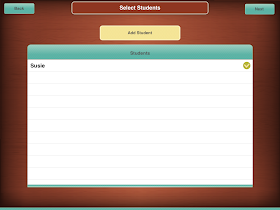Disclaimer: This post contains an affiliate link to Amazon.com for your convenience.
A little while ago on the blog's
Facebook page, I mentioned that I was in the market for a new plan book and asked your suggestions. I was a little amazed at how different we all are in our wants/needs with respect to a planner! A few of you told me that you make your own planners. Hmmm....Since I've never found a planner that I
love, and since I'm fairly comfortable with creating things...I decided to go ahead and make one!
I started by figuring out which aspects of a standard planner I use and thinking about how I modified my planner. When all was said and done, I ended up with a 55 page file! I shared with a couple of friends and they suggested that I put it out there on TPT for those of you who may be interested. Here's a rundown of my final version.
I wanted to make a few different options for covers...
Inside, I started with monthly calendar pages. There are calendar pages for August 2013 through July 2014 plus one blank month in case your school year runs differently than mine!
Next, I wanted a way to visualize my groups for the day
and add notes (If you're looking for a simple way to view your weekly schedule, check out one of my
posts from last year). I ended up with 2 pages/day...one for morning, one for afternoon. I figured I could add my groups and laminate (or use those
Dry Erase Pockets) then add in my planned activity with a dry erase marker.
I also wanted to include information on my students, especially their goal and objectives! I added these student goal and data collection sheets:
You can find out more about the data collection sheets, and download them for free,
HERE. What else do I need to keep track of? How about contact information for parents, a contact log, a to do list, and notes section!
This part might not make a ton of sense to anyone but me. You see, I always insisted on buying a planner that had both a month view and a week view. In the week view section, I would ignore the dates and draw boxes for each type of group (e.g., Preschool Inclusion, Kindergarten Artic, Preschool Language Pull-Out, etc.). Then, I would add my planned activities to those boxes. So rather than buy a planner with month/week views, I created these boxes for my planning:
And here's an example of the completed planner pages:
This planner ended up including everything I need in one spot! However, I started thinking I might end up with a 6-inch binder! So, I added extra covers if you'd like to keep the data sheets separate from your planning pages. They coordinate with the plan book covers, but say "Data Book."
Update: (7/30/13, 8PM EST)
You asked, I listened! I just went and updated the planner to include 15 more pages! It's now at a whopping 70 pages! Here's what I added per your suggestions:
A list for screenings and evaluations:
Monthly Sheets for IEPs and Meetings. (I left the last two columns blank so you can add your own headings...PW completed, Parent contacted, etc.):
Student attendance sheets. Personally, I would circle the dates the child received therapy, put an X through
holidays and vacations and days absent. You can use the notes section on the side to more clearly document (e.g. field trip, assembly, etc.)
If you're interested in finding out more about my planner, you can find it in my
TPT store! I will be giving away three copies of the planner. You can enter to win using the Rafflecopter below!
PS, Let me know if I missed anything! Also, if you purchase this item now, you'll be able to download all future updates. That means that next year, when I update the calendars, you won't need to pay for the item again. Just update, print, and go!



















































